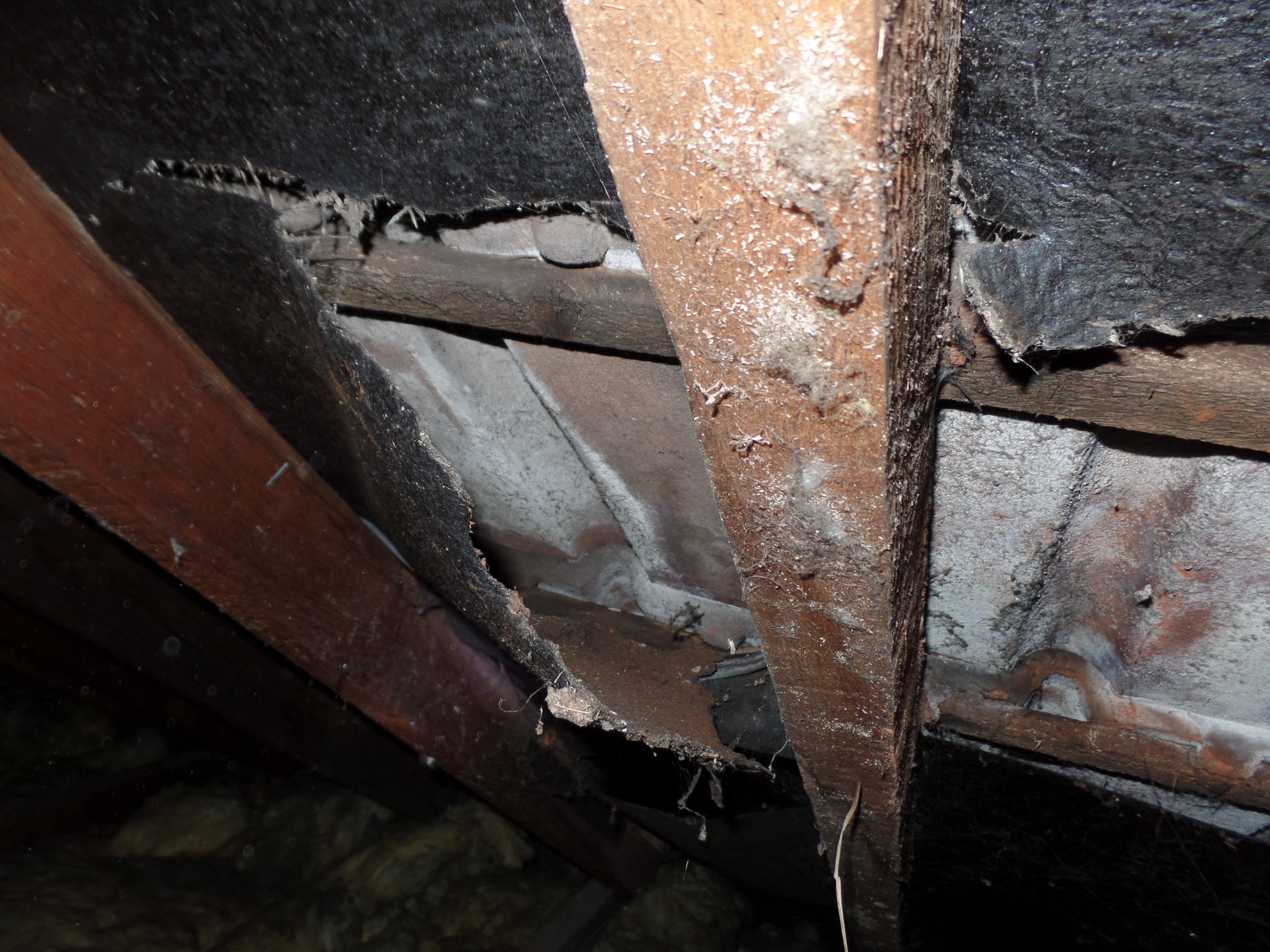Lofts and Attics
Lofts and Attics

Loft spaces
You are unlikely to get access to loft spaces when doing a general viewing. It’s easy to put your foot through the ceiling below when you slip on a joist! And this will be on the vendor’s household insurance or agent’s insurance so you would not be popular. So don’t be surprised if the agent will not let you check the loft void. Just smile, knowing we will check it thoroughly for you after you have made your offer.
However, you may be allowed to poke your head and shoulders through the access hatch, as for a homebuyer’s report. Or you may be buying a property privately.
Precautions
Checking lofts is not for the faint hearted as spiders, wasps, mice, flies and rats also make these locations their homes. If you don’t like creepy-crawlies, don’t go exploring in a strange loft!
Some of the older types of loft insulation have been known to contain asbestos. So do be careful and wear a PP3 level mask before opening any loft hatch of an older property. And carry a torch with a long beam, as very few loft areas have lights.
There are three main aspects to consider in loft spaces:
Sarking Felt
Roofing (sarking) felt is designed to keep the roof waterproof, lying beneath the tiles. It should stick out into the gutters.
One of the best easy tests is to simply turn off any torches or lights and look to see if daylight is visible through the roof or eaves. This suggests holes in tiles and felt or detailing (finishing) problems.
If the black bitumen type felt is present, this is a much older felt.If there are large rips or tears present, it may need replacing.This is a very expensive job -say £6k+.Differing colours of felt indicate where patch repairs have been made internally. These are rarely successful and again replacement in probably necessary.
Is the felt white, blue or green coloured, with tiny dimples? This suggests that the roof has been recovered in the last 20 years with a stronger breathable type of felt and should have a long service life left. However, look for rips and tears, due to poor installation. And condensation can still cause mould growth.
Timbers
The main things to look for are split or bowing timbers in a roof structure. Cracked timbers are often very noticeable as the sharp edges and shear nature of cracks tend to draw the eye. Rafters, struts and braces can often be strengthened internally without the need for expensive scaffolds.
Where major components such as purlins have bowed, this is seldom an “easy” fix. It may have been caused by heavier replacement roof tiles, for example. Often a new larger purlin will be required, at considerable expense.
Bowing timbers change the way that load is carried through the building. Bowed purlins and rafters do not transmit straight down at 90° and instead push outwards.This puts additional stress on the masonry. When rafters dish in this manner, it can cause” roof spread”, damaging the supporting walls below.
Keep an eye out for patches where the timbers have clearly been stained by water in the past (or at present!) This is most likely around chimneys, where the flashing above has been damaged. Rot may have already set in.
Insulation
With the ever-increasing cost of heating, loft insulation has been retrofitted in many homes.
Beware! Older types of insulation were vermiculite, gold shiny coloured lightweight pellets and blown cellulose which looks like tiny fragments of newspaper – which is often what they were. These types have been known to contain asbestos. If these are visible, don’t go any further into the loft – be thankful you are wearing a mask!
Sometimes the loft floors have been boarded so it is difficult to add insulation.Modern Building Regulations require 270mm of mineral fibre. This is rarely achieved as the rolls normally come in 100mm thickness so 200mm is more usual.
Sometimes the insulation has been poorly installed or has been pushed right into the eaves. Then the loft space can’t breathe or ventilate itself. Condensation then builds up inside the roof void, damaging the timbers in the unseen areas in the eaves.

